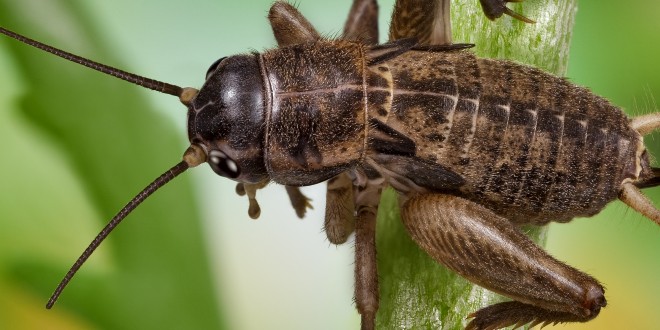Swarms of crickets are appearing all over Oregon and Nevada. Described as “Biblical,” the swarms bear religious significance for the Mormons.
The swarm is attributed to a decades-long drought in the midwest and warming temperatures. A similar infestation in 2003 caused more than $25 million in damage to crops, and a similar swarm in 2017 left the roads “blood red” from crushed bugs. In 2021 alone, Oregon agricultural officials estimate that grasshoppers and Mormon crickets damaged ten million acres of rangeland in 18 counties.
Mormon crickets are cannibalistic and feast on the crushed bodies of their brethren. The infestations are “truly biblical,” Skye Krebs, a rancher in Oregon, told AP. “On the highways, once you get them killed, then the rest of them come.”
Authorities cope with the problem by subsidized aerial spraying of diflubenzuron. The treatment inhibits the development of the nymphs but is ineffective against adults. The Oregon Legislature last year allocated $5 million to assess the problem and set up a Mormon cricket and grasshopper “suppression” program. An additional $1.2 million for the program was approved earlier this month.
Mormon Crickets vary in color from light green to red-brown and can grow to almost.3 inches in length. It lives throughout western North America in rangelands dominated by sagebrush and forbs. Despite its name, the Mormon cricket is actually a shieldbacked katydid. Although flightless, Mormon crickets can travel up to a mile a day and up to 50 miles in a single season. During its lifetime, a Mormon cricket can consume 38 pounds of plants — targeting everything from sagebrush and weeds to alfalfa and vegetable crops.
The Mormon cricket exists in populations of relatively low density but may undergo morphological changes triggered by high population densities, similar to those seen in locusts. The most noticeable change is in coloration: solitary individuals typically have green or purple coloration, while swarming individuals are often black, brown, or red. At certain times and places, however, population explosions or infestations occur in which large numbers of the crickets form roving bands. These bands may include millions of individuals and be found with densities of up to 100 individuals per square meter. These infestations may last years or even decades and are characterized by a gradual increase and then decrease in population. The factors that trigger these infestations are poorly understood but are thought to be weather-related.
The Mormon cricket takes its name from Mormon settlers in Utah, who encountered them while pushing westward, and for the prominent role they played in the 1848 “miracle of the gulls”. According to accounts recorded by the early Church of the Latter Day Saints, the first crop produced a meager harvest after arriving in Salt Lake Valley in 1847. A swarm of Mormon crickets endangered the second harvest but seagulls “miraculously” saved the crops following fervent prayers by the pioneer farmers by eating thousands of insects that were devouring their fields. It is said that these birds, native to the Great Salt Lake, ate mass quantities of crickets, drank some water, regurgitated, and continued eating more crickets over a two-week period.
In another Biblically inspired episode, less than two years earlier, many of the Mormon pilgrims were saved by quail that flew into their camp on their trek to the Great Salt Lake and made available as food.
This wave very much resembles the Biblical plague in this respect, coming as part of a wave of catastrophes that left the land of Egypt bereft of any food.
Locusts invaded all the land of Egypt and settled within all the territory of Egypt in a thick mass; never before had there been so many, nor will there ever be so many again. They covered the face of the whole land so that the land was darkened, and they ate all the plants in the land and all the fruit of the trees that the hail had left. Not a green thing remained, neither tree nor plant of the field, through all the land of Egypt. Exodus 10:14-15
According to Jewish tradition, the ten plagues will reappear before the Messiah. Rabbi Yosef Berger, the rabbi of King David’s Tomb on Mount Zion, explained this aspect of the Messianic process to Breaking Israel News, quoting the Prophet Micah.
I will show him wondrous deeds As in the days when You sallied forth from the land of Egypt. Micah 7:15
Jewish sources predict that all the plagues will reappear in the final Redemption but in even more powerful forms. It is written in Midrash Tanchuma, homiletic teachings collected around the fifth century, that “just as God struck the Egyptians with ten plagues, so too He will strike the enemies of the Jewish people at the time of the Redemption.”
Rabbi Bahya explained this concept Bahya ben Asher, a 13th-century Spanish commentator, wrote, “In Egypt, God used only part of His strength. When the final redemption comes, God will show much, much more of His power.”
The shortcode is missing a valid Donation Form ID attribute.




